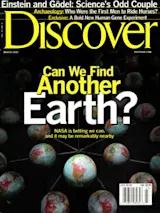Many people think of GPS as a convenient means for getting from one place to another without having to ask strangers for directions. Armed with inexpensive receivers no bigger than cell phones, folks who are directionally challenged can tune in to a constellation of 24 Global Positioning System satellites and find out exactly where they are on the planet at any given moment, not to mention exactly what time it is. What few casual GPS users realize, however, is that these same satellite signals can be used for more than just determining time and location. Techno-savvy scientists have discovered that GPS is a remarkable tool for detecting motion and monitoring a world in flux.
GPS sensors perched atop two 50-story towers on Hong Kong's Tsing Ma Bridge, as well as at strategic points along 100,000 miles of suspension cables, monitor motion caused by high winds in the harbor. The bridge ...














